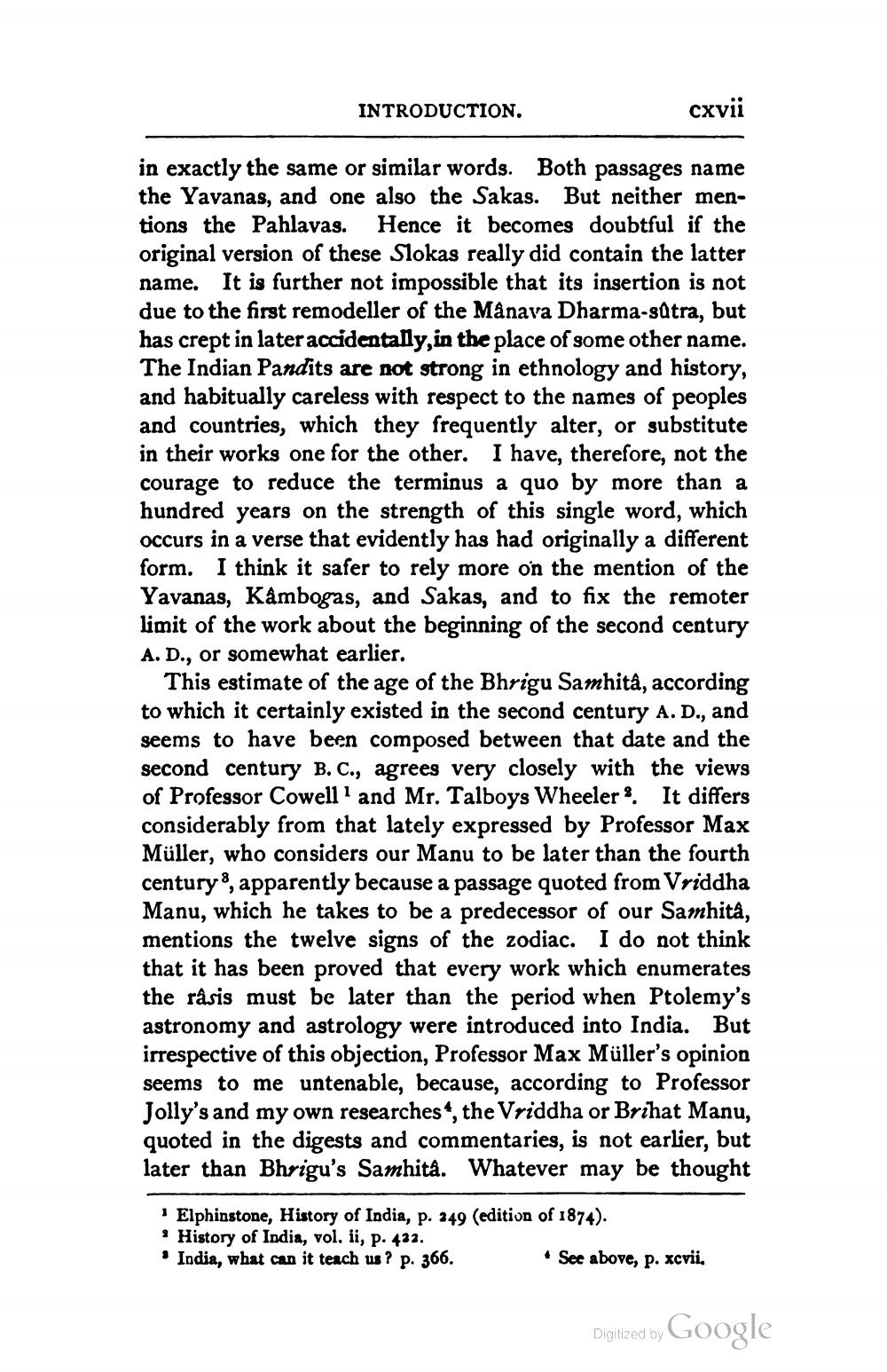________________
INTRODUCTION.
cxvii
in exactly the same or similar words. Both passages name the Yavanas, and one also the Sakas. But neither mentions the Pahlavas. Hence it becomes doubtful if the original version of these Slokas really did contain the latter name. It is further not impossible that its insertion is not due to the first remodeller of the Mânava Dharma-stra, but has crept in later accidentally, in the place of some other name. The Indian Pandits are not strong in ethnology and history, and habitually careless with respect to the names of peoples and countries, which they frequently alter, or substitute in their works one for the other. I have, therefore, not the courage to reduce the terminus a quo by more than a hundred years on the strength of this single word, which occurs in a verse that evidently has had originally a different form. I think it safer to rely more on the mention of the Yavanas, Kambogas, and Sakas, and to fix the remoter limit of the work about the beginning of the second century A. D., or somewhat earlier.
This estimate of the age of the Bhrigu Samhità, according to which it certainly existed in the second century A. D., and seems to have been composed between that date and the second century B.C., agrees very closely with the views of Professor Cowell and Mr. Talboys Wheeler %. It differs considerably from that lately expressed by Professor Max Müller, who considers our Manu to be later than the fourth century 8, apparently because a passage quoted from Vriddha Manu, which he takes to be a predecessor of our Samhità, mentions the twelve signs of the zodiac. I do not think that it has been proved that every work which enumerates the râsis must be later than the period when Ptolemy's astronomy and astrology were introduced into India. But irrespective of this objection, Professor Max Müller's opinion seems to me untenable, because, according to Professor Jolly's and my own researches, the Vriddha or Brihat Manu, quoted in the digests and commentaries, is not earlier, but later than Bhrigu's Samhita. Whatever may be thought
Elphinstone, History of India, p. 249 (edition of 1874). • History of India, vol. ii, p. 432. • India, what can it teach us? p. 366.
* See above, p. xcvii.
Digitized by Google




